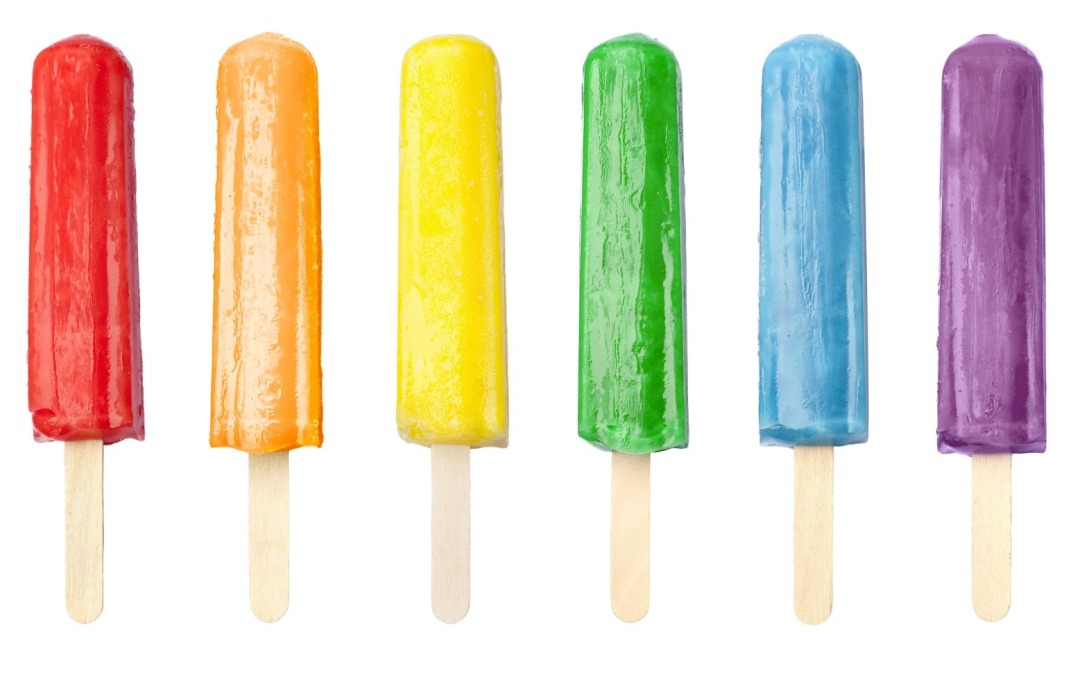
by Lorri | Nov 26, 2014 | Tips, UnCorked
For many of us the concept of leftover wine is unfamiliar. But just as there are often leftover foods when the party is over, the same is true with wine. If you find yourself with more than you want to enjoy with dinner the next day, there are a variety of ways to save it for future use.
I’ve spent the past few weeks researching and doing hands-on experiments putting these tips for using every last drop to the test.
Ice cubes
It may be the simplest, but I have found it to be the most useful. Save leftover wine or freezing it in standard ice cube trays. The cubes are especially useful in recipes for sauces and stews. Ten to 12 cubes equals one cup.
Homemade vinegar
It isn’t as easy as pouring leftover wine into a container — you’ll need to do a few things to ensure the best quality — but you can make vinegar at home with leftover wine. Pour the wine into an open container and cover with cheesecloth or even a dish towel (anything to keep insects out). Some instructions say to leave the wine to gain its own bacterial culture, known as the “mother,” but it’s best to add vinegar bacteria called Mycoderma aceti. Take one part unpasteurized store-bought vinegar (such as Bragg’s) and combine with three parts leftover wine. Over the next couple of weeks the mixture will get a bit murky, with a film developing on the surface and then sinking to the bottom. When it begins to smell vinegary, start tasting. Over time it will start becoming very acidic. When you like the taste, strain it off, put into a bottle and store in the refrigerator.
Adult popsicles
Yes, it is possible. This recipe calls for blackberries and pinot noir. But you could use any combination of fruit and wine that you like.
Pinot Noir Blackberry Pops
- 1/2 cup organic brown sugar
- 1/2 cup water
- 5 cups blackberries
- 6 ounces pinot noir
Combine the sugar and water in a small saucepan over medium-low heat. Cook, stirring frequently, until sugar dissolves. Remove from heat and cool.
Puree the berries in a food processor or blender. You should have about 2 cups puree.
Combine the simple syrup, pureed berries and the wine. Pour into molds; insert sticks and freeze until solid, at least 4 to 6 hours.
Makes 10 pops.
Ice cream topping
Combine 2 cups white wine, ¼ cup honey and ½ vanilla bean (split) in a saucepan. Add 4 cups diced dried fruit (apricots, cherries, raisins, medjool dates) and bring to a boil. Remove from heat. Let stand for about 10 to 15 minutes. Use warm or chill.
Mulled wine
Keeping separate containers for white and red wine, pour leftover wine into a 1-quart freezer-safe container. Keep adding other leftover wine over time. (Be sure to keep your white and red wines separate.) When the container is full, you have your base for a great classic. Empty the frozen wine into a large pot; add spices such as cinnamon sticks, whole cloves or a few whole star anise. Melt wine over medium heat; sweeten to taste with honey, sugar or apple juice. Simmer for 10 minutes and then serve with a twist of citrus peel.
Salad dressing
Take a teaspoon of red or white leftover wine and combine with 2 tablespoons wine vinegar, 1 tablespoon finely chopped shallots. Let the shallots soften and flavors infuse for about 10 minutes. Whisk in ½ tablespoon of honey, ¼ teaspoon salt and 3 tablespoons of olive oil.
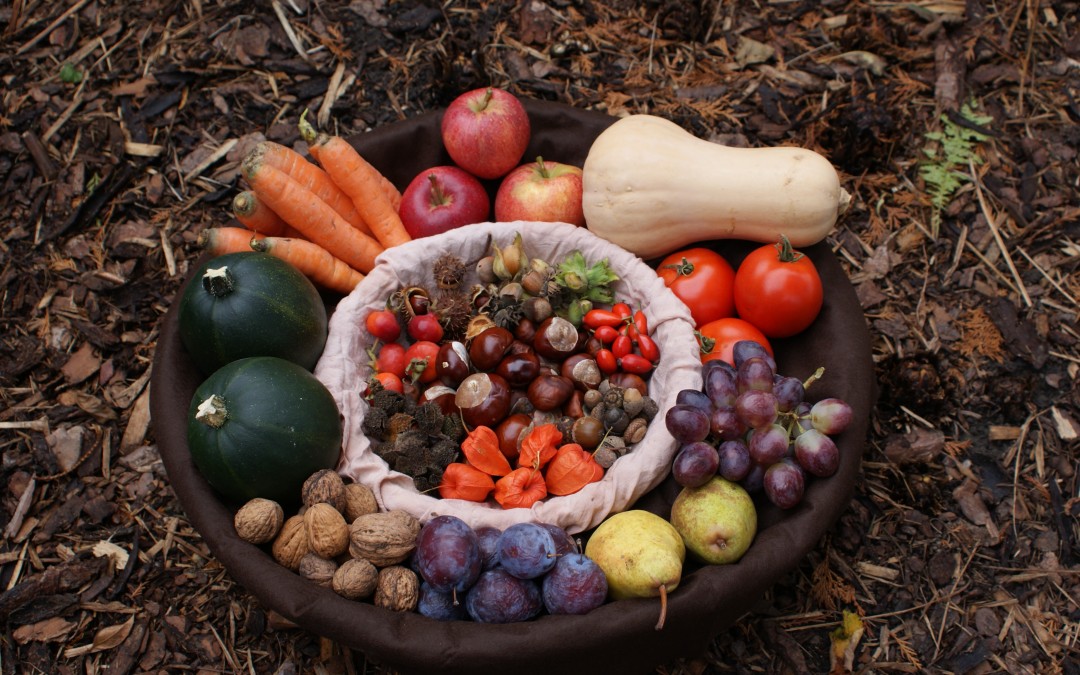
by Lorri | Nov 19, 2014 | UnCorked
With Thanksgiving just a week away, most of us are finalizing our menus, finishing up the decorating and even beginning to cook. In the past I have written about food and wine pairings for the vast array of flavors — even including suggestions for the right wine to pair with dressing. But the question I am asked most frequently this time of year is about recommendations and guidance in what wine to buy. A reader said it well, “Just tell me what to buy when I walk in the door of the wine shop. This would be one less stress.” So in an effort to begin the holiday season with less stress, I have put together some recommendations.
Large Family Gatherings
As with any large party this is not the place to splurge. The key is keeping the wines versatile but staying with a great value.
THE WHITES
- 2013 Matchbook Chardonnay, California (about $13 retail)
- 2013 Force of Nature Chardonnay, California (about $17 retail)
THE REDS
- 2013 Kenwood Russian River Pinot Noir, California (about $14 retail)
- 2013 Bell Big Guy Red, California (about $14 retail)
- 2013 Block Nine Caiden’s Vineyard Pinot Noir, California (about $15 retail)
Intimate Seated Lunch
When we’re sitting around the table with family and friends, the wine has more focus and there’s a slower pace for its appreciation. Lighter bodied styles with lower alcohol content work best for lunch gatherings.
THE WHITES
- 2013 Trimbach Gewurztraminer, France (about $27 retail)
- 2013 Laxas Albarino, Spain (about $19 retail)
- 2013 Famega Vinho Verde, Portugal (about $9 retail)
- 2013 Dr. Hermann “H” Riesling, Germany (about $16 retail)
THE REDS
- 2013 Cline Cellars Cashmere, California (about $17 retail)
- 2013 Rosa de Argentina Malbec Rose, Argentina (about $15 retail)
Intimate Seated Dinner
Just as with lunch, this setting is more personal for your guests. For these occasions I always offer the simple advice to spend as much as you can afford on your choice of a wine. A Thanksgiving dinner is one of those occasions where the wine shares the spotlight. We have very few moments each year to surround ourselves with family and friends paired with amazing foods and wine.
THE WHITES
- 2013 Kenwood Chardonnay, California (about $13 retail)
- 2013 Rob Murray Vineyards Stasis Chardonnay, California (about $39 retail)
THE REDS
- 2013 Schug Vineyards Pinot Noir, California (about $25 retail)
- 2013 Reynolds Family Vineyards Pinot Noir, California (about $45 retail)
Bring a Bottle of Wine
If you’re not the host, you’ll likely hear this request when asking “what can I bring?” to a gathering. Consider this a request for a wine to be enjoyed during the celebration rather than a gift for those hosting. The key is versatility and following the hunch that there will be turkey and dressing on the menu.
THE WHITE
- 2013 Treana White by Austin Hope, California (about $21 retail)
THE RED
- 2014 Presqu’ile Winery Pinot Noir, California (about $50 retail)
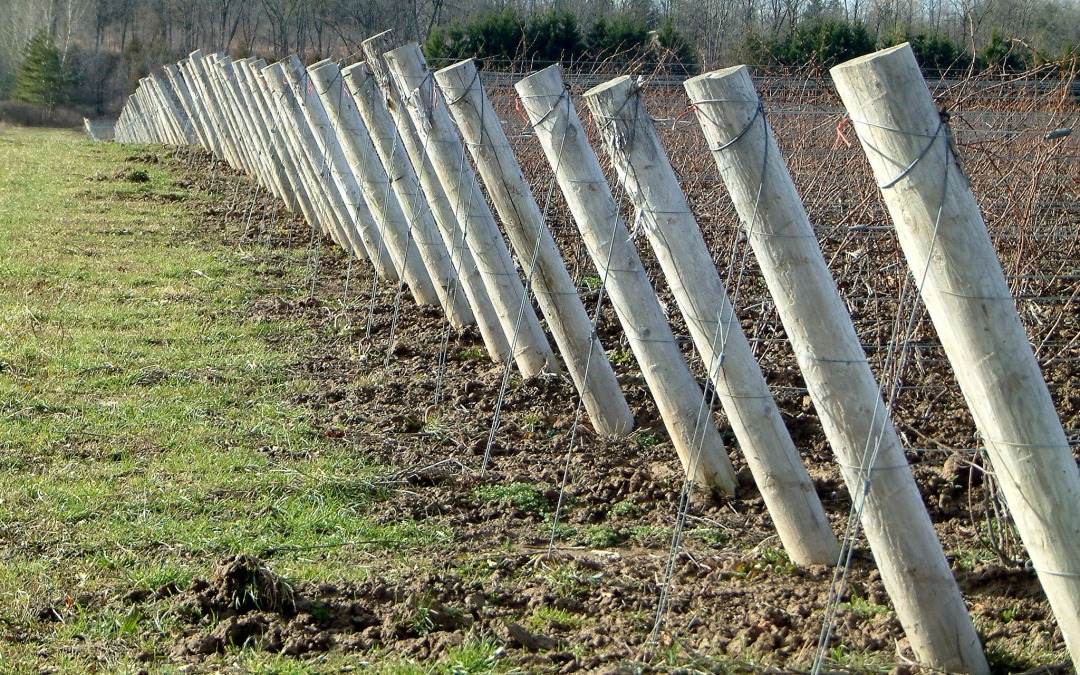
by Lorri | Nov 12, 2014 | UnCorked
Many consumers are interested in how food is grown and the environmental impact of various farming practices. The same is true of wine. I’ve covered the topics of organic versus biodynamic and vegan and vegetarian wines, but there’s so much more to learn. Conversation over dinner with friends recently led into the topic of dry farming.
The term shows up on labels, websites, winemaker notes. There’s debate if the practice can improve the quality of the grape.
Dry farming refers to a practice of relying only on natural rainfall for growing grapes. It’s a historic practice in use particularly in the Mediterranean region for growing grapes and olives. Many European countries follow this technique, with laws prohibiting irrigation of wine grapes during the growing season.
The practice obviously reduces water use but it can also improve the quality of the grape. Because the vines must grow deeper into the soil to access water, the resulting grapes have much more intensity. Some vintners believe the practice leads to sweeter, denser and smaller fruit. On the flipside, any fruit that receives too much water often loses its intensity and has a dull, diluted flavor.
Dry farming is not as easy as just turning off the faucet. There are some other key elements. The soil has to have good water holding characteristics. The vines have to be spaced sufficiently to allow the plants to gain enough moisture. If they’re planted too closely there is too much competition for water. Not just any rootstock can be used. It must have a certain strength that seeks moisture deep in the soil. Most importantly there is constant vineyard cultivation. Grape vines are very adaptable but there are definitely more hands at work in the vineyards when it comes to dry farming.
THE VALUE
- 2012 Tablas Creek Patelin de Tablas Blanc, California (about $18 retail)
THE SPLURGE
- 2013 Cornerstone Cellars Sauvignon Blanc, California (about $28 retail)
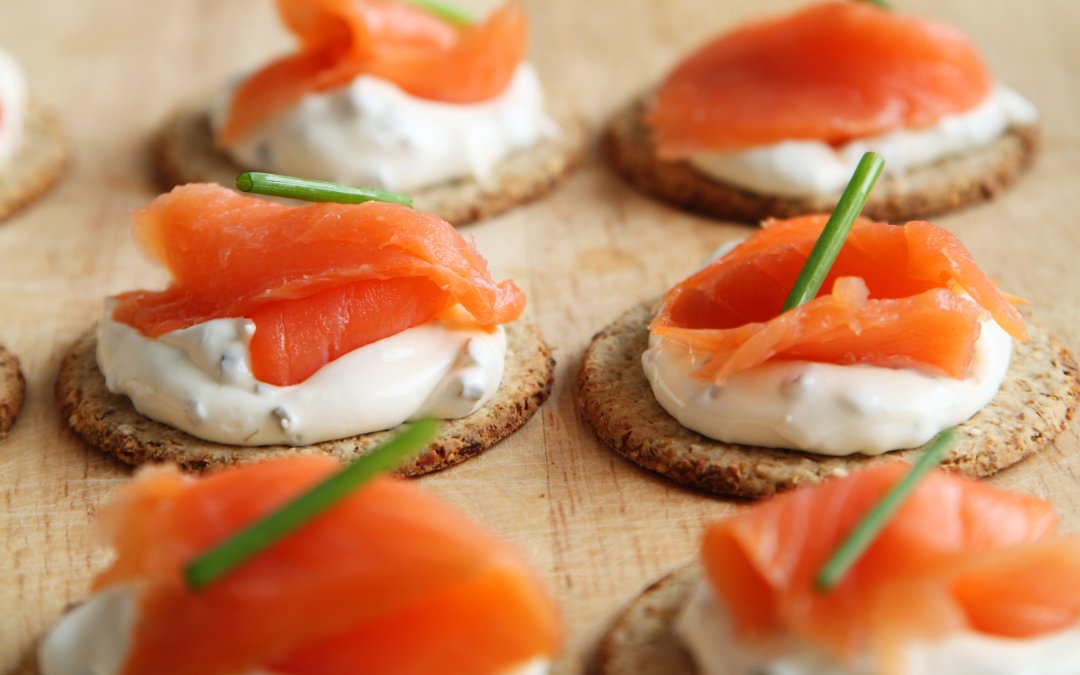
by Lorri | Nov 5, 2014 | UnCorked
Selecting the best wine to pair with your dinner is easy when the menu is simple, such as a grilled steak. A juicy grilled steak equals a full-bodied tannic red wine. But when we’re dining out meals are often a bit more complex, featuring a pairing option we sometimes ignore, the appetizers.
If you consider the appetizer as a mini version of the main courses (they are usually similar) it makes it much easier to find a match. A small portion of salmon, grilled shrimp or quail will pair easily with the same wine simply as a larger portion does, and even with most side dishes. But there are a few tips to keep in mind to navigate your options.
Be adventurous
Chilled, dry “fino” sherry is a wonderful match with tapas, olives, ham, sausage and basically anything spicy and salty. Many of those dishes are starters and fino or manzanilla styles of sherry can easily accompany a main dish of seafood, smoked salmon, squid and almost any grilled fish. Respected dining establishments know the key to fino sherry is a newly opened fresh, zesty bottle. This is not the style of sherry that can sit forlornly on the bar shelf for months. This style of wine is at its best when opened and consumed within a day or so.
The soup challenge
If a soup is a simple broth or thin liquid it will most likely be an awkward pairing with any wine. Texture and main ingredients are key for a starter soup and wine pairing. The texture may be an addition of noodles, hearty vegetables, meats or even couscous and barley. Soups with texture similar to stew tend to pair easier with wine. As with all food and wine combinations, consider the key ingredients. Pair a light vegetable broth based soup with a lighter bodied white wine. A robust, braised beef soup needs a fuller bodied wine to compete with the dish.
Bubbly simply works
Some of us think of Champagne only with celebration but it’s one of the most food friendly wines we have in restaurants and wine shops. It easily manages a clash of food flavors, weights and textures. Sparkling wine and Champagne are among the most versatile, and popping a bottle of bubbly is the ideal start for any dinner. It is but one of the few wines able to join you with the appetizer and end with dessert.
by Lorri | Jul 16, 2014 | Tips, UnCorked
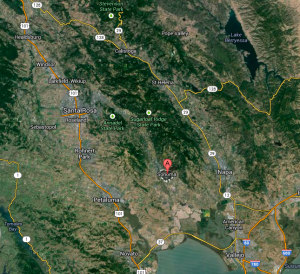 As I type this Uncorked, I am heading west to wine country. Of course I am elated about my trip, but wine region retreats don’t always feel like a vacation at the beach, where the days are filled with wake up, soak up the sun, nap, have an amazing dinner and repeat. For the wine enthusiast, wine region trips, though pleasurable, are often quite stressful. I tend to think of them as being similar to a fast and furious visit to the Louvre — trying to see and experience everything in just one day.
As I type this Uncorked, I am heading west to wine country. Of course I am elated about my trip, but wine region retreats don’t always feel like a vacation at the beach, where the days are filled with wake up, soak up the sun, nap, have an amazing dinner and repeat. For the wine enthusiast, wine region trips, though pleasurable, are often quite stressful. I tend to think of them as being similar to a fast and furious visit to the Louvre — trying to see and experience everything in just one day.
And I’m not alone. I have talked with several readers returning from spectacular wine regions feeling as if they need a vacation from their vacation. It happens to all of us. Just yesterday I had to pull myself back into reality during my planning — so many wineries, so little time — and I know it will happen again next time.
Most of us traveling to wine regions for vacation will have already confirmed appointments before arriving. But keep in mind, the appointments can be part of the stress. We have a tendency to want to schedule as many as possible in one trip in order to taste and experience them all. But this type of planning can lead to feeling overbooked and exhausted, not far off from the type of day at the office — running from appointment to appointment — the reason for the vacation. If you are scheduling only VIP appointments and vineyard tours, I recommend no more than three in one day. And if possible, schedule appointments at vineyards near each other on the same day to help to slow the pace of your day.
This brings us to the next tip. It’s very easy choosing your top wineries to visit and the wines you enjoy. What isn’t easy is when you are leaving one winery and realize your next appointment is an hour drive away. Arriving late can delay the tour start time and make a not so wonderful first impression at the winery.
Researching the locations of the winery is vital. Call me old-fashioned, but I keep a paper road map of the region I am visiting in front of me when making appointments. It helps me get my bearings and visualize the travel for the day. Last week my husband, being a technology guru, walked in and laughed upon seeing my road maps spread across the floor and table.
His advice was simple: “There’s an app for that.” For the tech-savvy, there are many easier-to-use tools to plan your schedule than my road maps. Google Maps and Map Quest are a couple. If you visit the winery website it will usually have links for directions to the vineyard.
If you are a foodie like me, food is just as important as the wine. I remember my first visit to Napa Valley, casually arriving (and very eager to eat) at one of the top-rated restaurants in the area. I quickly learned that, as with winery appointments, the reservation is a must. When planning your days for wineries, consider restaurants also. Call well in advance, because many will be booked as far ahead as several months.
If you plan ahead, know your map and slow down the pace, it can feel like a day at the beach — wake up, drink wine, enjoy beautiful scenery, nap, have an amazing dinner and start over the next day!
by Lorri | May 28, 2014 | UnCorked
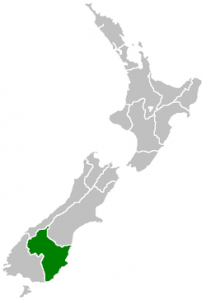 New Zealand is generally known for its racy, bracingly acidic sauvignon blancs, but pinot noir is quickly joining in the limelight.
New Zealand is generally known for its racy, bracingly acidic sauvignon blancs, but pinot noir is quickly joining in the limelight.
New Zealand’s South Island is one of the world’s most exciting hot spots for the pinot noir devotee. This grape has a reputation for being finicky outside of Burgundy and doesn’t adapt well to many new areas, but the Otago region’s pinot noir production is growing at a phenomenal rate, with new wineries opening every year.
The cool climate of the South Island is comparable with the best growing regions for this grape. Central Otego grows New Zealand’s (and the world’s) most southerly grape vines, some of them cultivated south of the 45th parallel. It is New Zealand’s only wine region with a continental climate. Most vines are planted on hillsides to gain maximum sun exposure.
The region has a traditional winemaking style much like you will find in benchmark European wine regions.
Much of the influence is from the many New Zealand winemakers working second annual vintages in Europe and gaining a wider perspective on the world of wine (known as flying winemakers).
Another positive influence is the reverse migration of mostly young French winemakers joining in during the New Zealand harvest and winemaking. These influences continue to show in the restrained delicate pinot noir styles from the South Island.
THE VALUES
- 2012 Dashwood Pinot Noir, New Zealand (about $17 retail)
- 2012 The Seeker Pinot Noir, New Zealand (about $14 retail)
- 2012 Brancott Pinot Noir, New Zealand (about $16 retail)
THE SPLURGES
- 2012 Roaring Meg Pinot Noir, New Zealand (about $23 retail)
- 2012 Mount Difficulty Pinot Noir, New Zealand (about $40 retail)
- 2012 Greywacke Winery Pinot Noir, New Zealand (about $39 retail)




 As I type this Uncorked, I am heading west to wine country. Of course I am elated about my trip, but wine region retreats don’t always feel like a vacation at the beach, where the days are filled with wake up, soak up the sun, nap, have an amazing dinner and repeat. For the wine enthusiast, wine region trips, though pleasurable, are often quite stressful. I tend to think of them as being similar to a fast and furious visit to the Louvre — trying to see and experience everything in just one day.
As I type this Uncorked, I am heading west to wine country. Of course I am elated about my trip, but wine region retreats don’t always feel like a vacation at the beach, where the days are filled with wake up, soak up the sun, nap, have an amazing dinner and repeat. For the wine enthusiast, wine region trips, though pleasurable, are often quite stressful. I tend to think of them as being similar to a fast and furious visit to the Louvre — trying to see and experience everything in just one day.